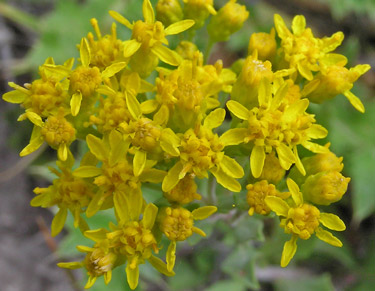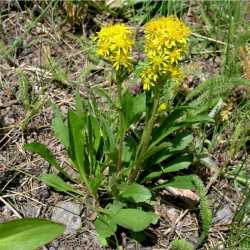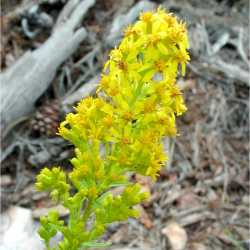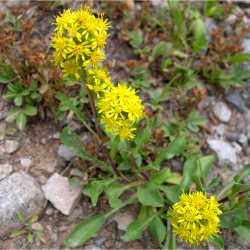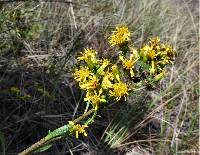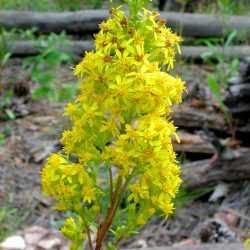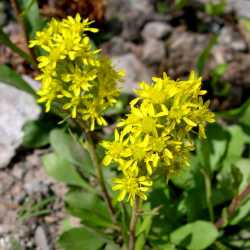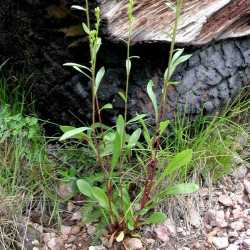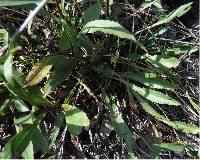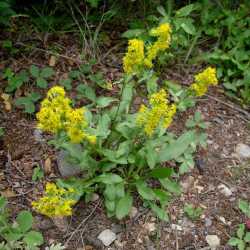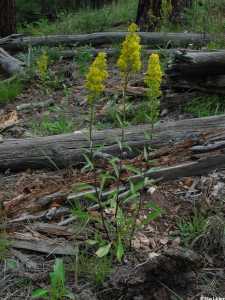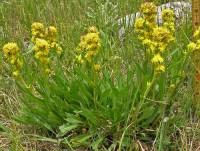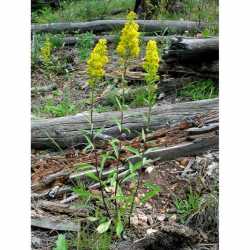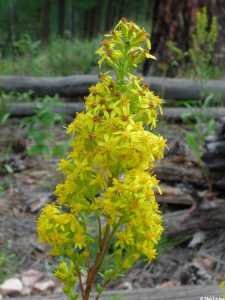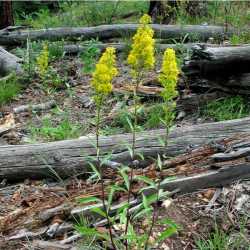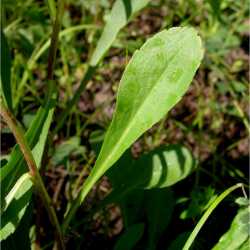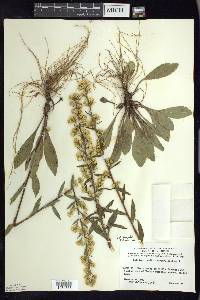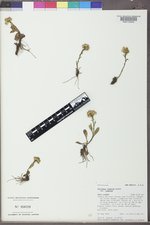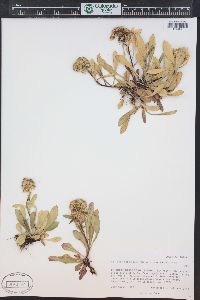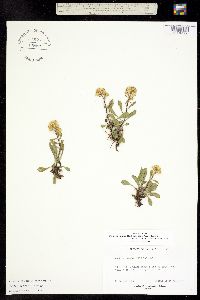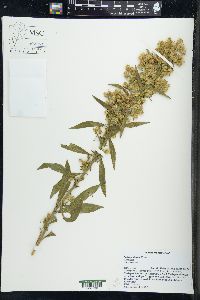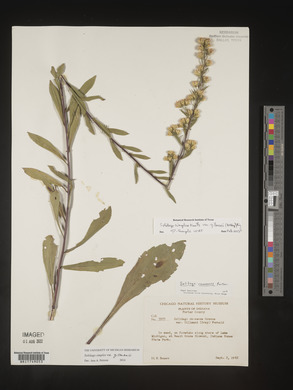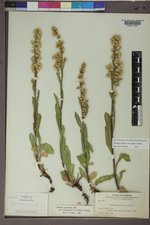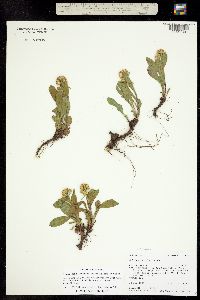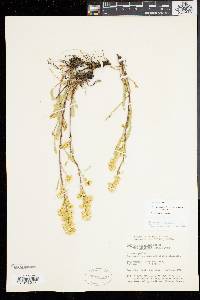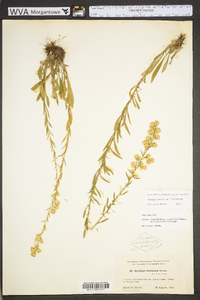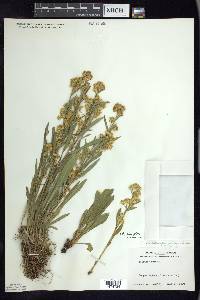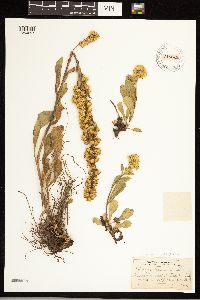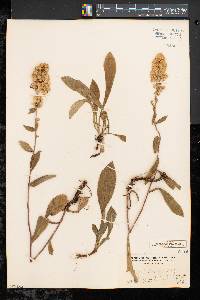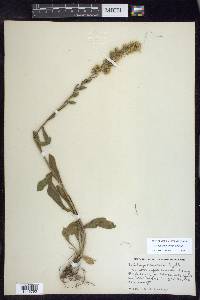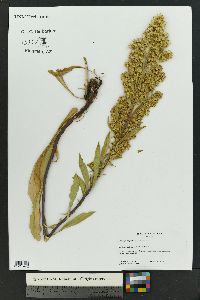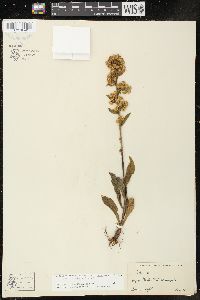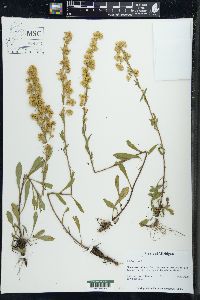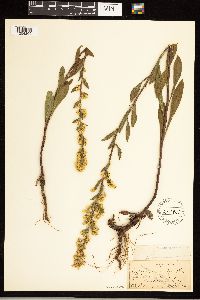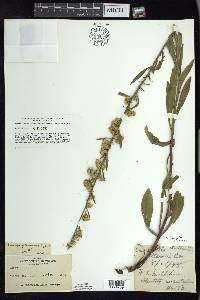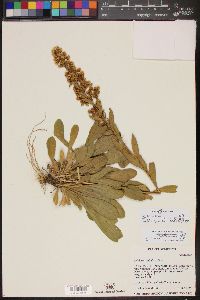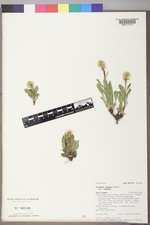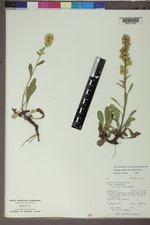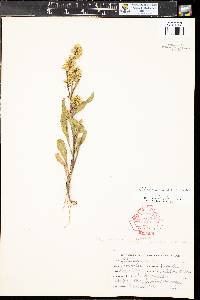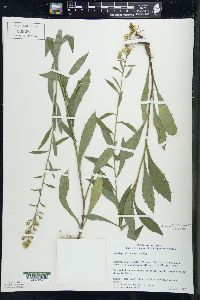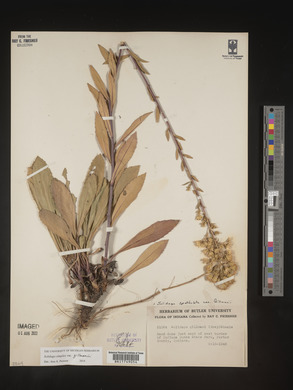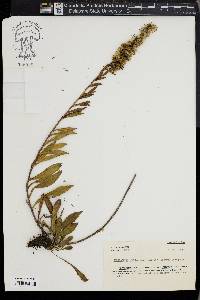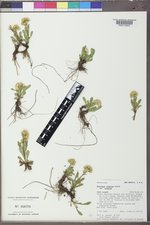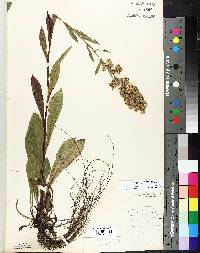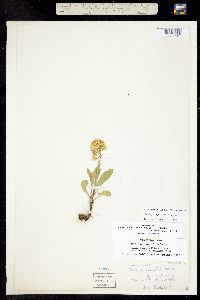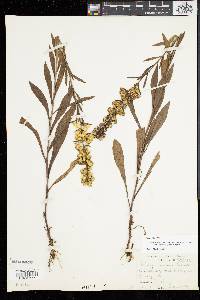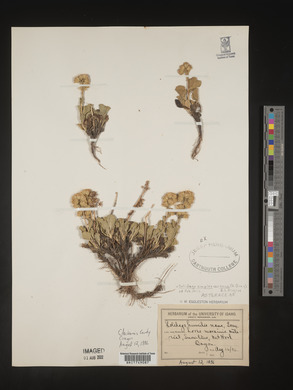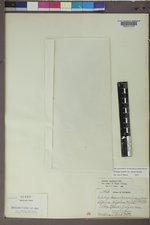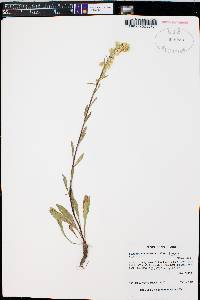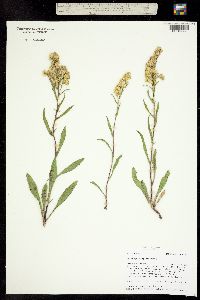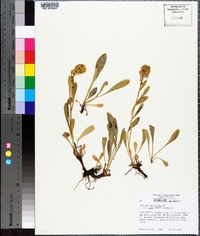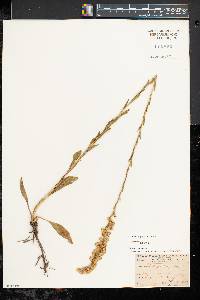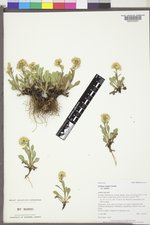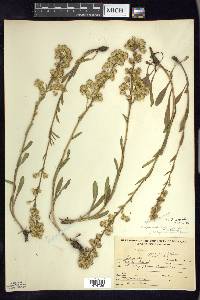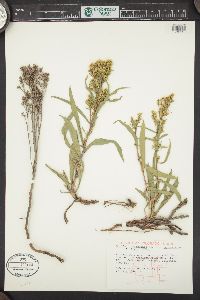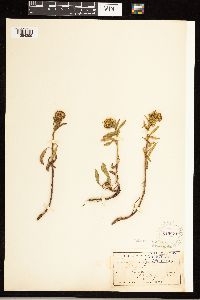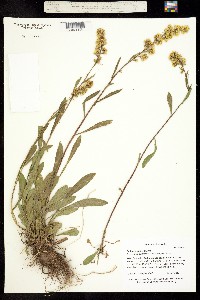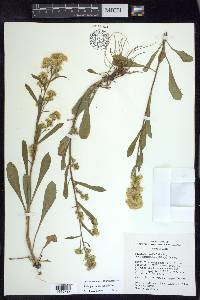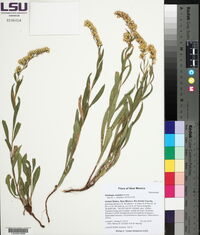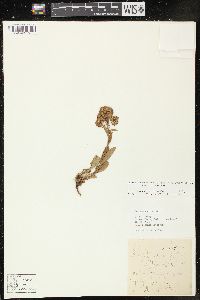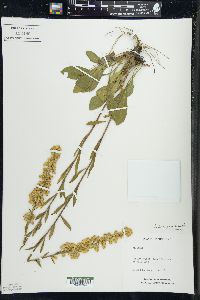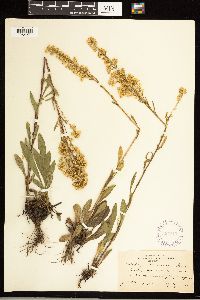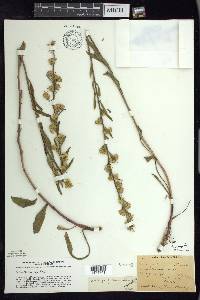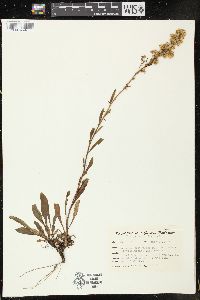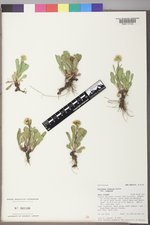Solidago simplex
|
|
|
|
Family: Asteraceae
Mt. Albert goldenrod, more...Sticky Goldenrod
[Solidago multiradiata var. neomexicana A. Gray] |
Plants 5-80 cm; caudices branching. Stems 1-10+, ascending to erect, proximally glabrous, strigose in arrays. Leaves: basal and proximal cauline petiolate, blades narrowly oblanceolate, (20-)50-100(-160) × (2-)5-16(-56) mm, margins serrate to crenate, apices acute to ob-tuse, glabrous; mid and distal sessile, similar, blades lanceolate to linear, 12-45 × 2-19 mm, reduced distally, margins entire to sparsely serrate, sometimes resinous. Heads 3-150, not secund, in narrowly elongate, paniculiform arrays, broadly so in robust plants (12.5-19 × 2.5-3 cm wide), consisting of short axillary and terminal racemiform clusters, proximal branches elongate in larger plants, branches glabrate to strigillose. Peduncles 3.1-10.3 mm, glabrate to sparsely strigillose; bracteoles few, linear. Involucres campanulate, 3-7 mm. Phyllaries (in 3-4 series) strongly unequal, often resinous; outer ovate, acute, inner linear-oblong, obtuse. Ray florets 7-16; laminae 2-5 × 0.7-0.9 mm. Disc florets 6-31; corollas 4-4.9 mm, lobes 0.6-1.3(-2) mm. Cypselae narrowly obconic, 1.9-3.2 mm, sometimes with dark ridges, strigillose; pappi 1.9-5.2 mm (bristles sometimes clavate). The somewhat viscid-resinous heads of Solidago simplex are its most distinctive feature, separating it from similar sympatric species. G. S. Ringius (1985) did a detailed multivariate analysis of the S. spathulata/S. simplex complex (the latter under the name S. glutinosa). The cytogeography of the species complex was presented by Ringius and J. C. Semple (1987). Neither study included data on the next three species occurring in the southeastern United States. The species is divided into two subspecies and seven varieties following G. S Ringius (1985) and J. C. Semple et al. (1999). Three varieties occur in the diploid transcontinental subsp. simplex: var. simplex, var. nana, and var. chlorolepis. Four varieties occur in the eastern North American tetraploid-hexaploid subsp. randii: var. monticola, var. gillmanii, var. ontarioensis, and var. racemosa. Except for var. simplex, varieties are restricted to different habitats in relatively limited ranges.
Plants 1-9 dm from a branched caudex, essentially glabrous except for some puberulence in the infl (or more hairy in var. gillmanii); lvs basally disposed, the larger ones narrowly oblanceolate to narrowly obovate, 2-30 cm נ4-40 mm, toothed or subentire, generally acute or acutish, often irregularly ciliolate-margined; cauline lvs progressively reduced, mostly lance-elliptic to oblanceolate or linear; infl racemiform to dense and thyrsoid, or even ample and branched, but not secund, its lvs mostly reduced and inconspicuous; invol bracts imbricate, acutish or obtuse, often glutinous; rays 7-10; achenes short-hairy; 2n=18, 36, 54, in ours mostly 36. Rock-crevices and sand-dunes; N.S. to n. and sw. Va. and reputedly Ky., w. to Mich. and n. Ind., and across s. Can. to the cordillera and the Pacific. Our plants are ssp. randii (Porter) Ringius, with 3 vars. Robust plants, 3-9 dm, often more hairy than the other vars., growing on sand dunes along Lake Michigan and w. Lake Huron, with large heads (invol 6-9 mm) in a long, often branched infl, are var. gillmanii (A. Gray) Ringius. (S. deamii; S. gillmanii) Of the remaining, more widely distributed plants, those with the basal lvs mostly 3-8 times as long as wide, tending to be sharply toothed, the infl tending to be compact and thyrsoid, are var. monticola (Porter) Ringius. (S. randii; S. maxonii), while those with the basal lvs 7-10 times as long as wide, tending to be subentire, and the infl tending to be loose and subracemiform, are var. racemosa (Greene) Ringius (S. racemosa). Gleason, Henry A. & Cronquist, Arthur J. 1991. Manual of vascular plants of northeastern United States and adjacent Canada. lxxv + 910 pp. ©The New York Botanical Garden. All rights reserved. Used by permission. From Flora of Indiana (1940) by Charles C. Deam An infrequent goldenrod on open dunes bordering Lake Michigan. At present it is common on the dunes just east of the Dunes State Park, Porter County. Authors write that the stems are glabrous to the inflorescence. My specimens are all more or less or have been, densely appressed-pubescent. The abrasive force of moving sand, however, has detached the hairs from the stems of some of my specimens so that to a casual observer they appear glabrous. Close inspection, however, will usually show many hairs on protected parts of the stem and the many hair scars prove that the plants were pubescent. The glabrate specimens match those grown in places protected from shifting sand. This species is highly variable in all parts and it is possible that the preceding species [S. deamii] should be included in it. In 1937 I made a special effort to collect this species in large series. In so doing I found the roots of a few plants infested with aphids. In my collection of former years, I have several sheets with small heads and with many undeveloped flowers. Might it not be that at least some of the variation in these plants is nutritional and due to badly infested roots? The plants found this year that were infested were normal but the aerial effect of aphids on cultivated asters is well known. [Of S. deamii, considered a synonym of S. simplex in modern treatments, Deam says:] Known only from dunes near Lake Michigan in Lake and Porter Counties. |
|
|
|

